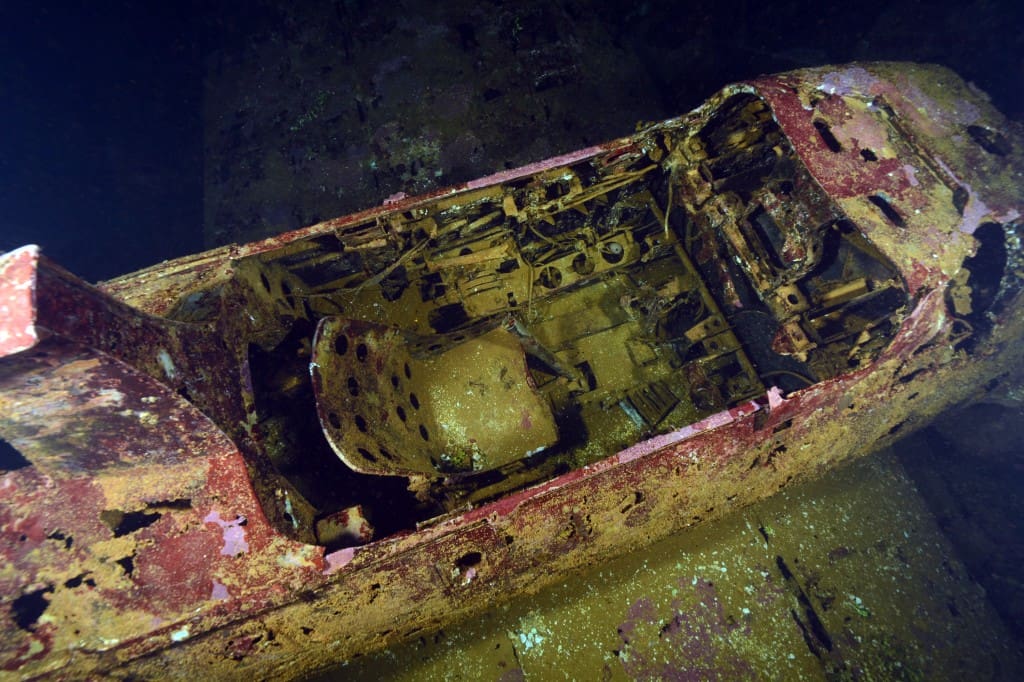Nestled in the tranquil waters of Chuuk Lagoon, the Fujikawa Maru stands as a sentinel to history, inviting divers into the heart of a World War II narrative submerged beneath the waves. This aircraft transport ship, often the first stop for divers exploring this renowned wreck diving destination, encapsulates a unique blend of historical intrigue and natural beauty. Let’s dive into what makes the Fujikawa Maru a must-visit for underwater adventurers.
A Journey Back in Time
The Fujikawa Maru was originally a cargo ship, requisitioned by the Imperial Japanese Navy during World War II to serve as an aircraft transport. In February 1944, during Operation Hailstone, she met her watery fate in Chuuk Lagoon, a pivotal moment frozen in time beneath the Pacific Ocean’s surface. Today, the ship rests upright on the ocean floor, its structure transformed into an artificial reef teeming with life, yet still cradling the echoes of its past.
 Unveiling the Marvels Within
Unveiling the Marvels Within
The allure of the Fujikawa Maru lies not only in its external structure, adorned with vibrant corals and bustling with marine life but also in the treasures hidden within its holds. Among the most remarkable finds are the well-preserved parts of Zero fighter planes, offering a tangible connection to the past. Divers have the unique opportunity to glide through the ship’s cavernous interiors, coming face-to-face with history encapsulated in the form of airplane engines, propellers, and even the haunting silhouettes of fuselages.
A Photographic Paradise
For underwater photographers, the Fujikawa Maru presents an unparalleled canvas. The interplay of light filtering through the water, illuminating the historical artifacts and the surrounding coral gardens, creates a mesmerizing scene. The sight of Zero fighters, once symbols of aerial prowess, now resting silently in their underwater hangar, offers a poignant reminder of the impermanence of human endeavors against the backdrop of nature’s resilience.
 Preparing for Your Dive
Preparing for Your Dive
Diving the Fujikawa Maru is accessible to divers with an Open Water certification due to its relatively shallow depth, starting at around 15 feet and descending to about 110 feet to the ocean floor. However, those wishing to explore the deeper recesses or penetrate the wreck should have Advanced Open Water certification and specialty training in wreck diving to navigate safely through enclosed spaces.
Conservation and Respect
As we immerse ourselves in the wonders of the Fujikawa Maru, it’s crucial to approach with respect for those who lost their lives during the conflict and with a commitment to preserving this underwater museum for future generations. Divers are encouraged to observe without touching, maintaining buoyancy to avoid disturbing the delicate marine ecosystems that have claimed the Fujikawa Maru as their home.
An Unforgettable Dive
The Fujikawa Maru is not just a dive site; it’s a journey into a pivotal moment in history, a haven for marine life, and a testament to the enduring stories of the past that the ocean keeps. Whether you’re drawn by the call of history, the allure of underwater photography, or the thrill of exploration, the Fujikawa Maru offers an experience that resonates long after you’ve surfaced. So, gear up and prepare to be transported to a world where history and nature intertwine beneath the waves, waiting to reveal their secrets to those who dare to explore.






